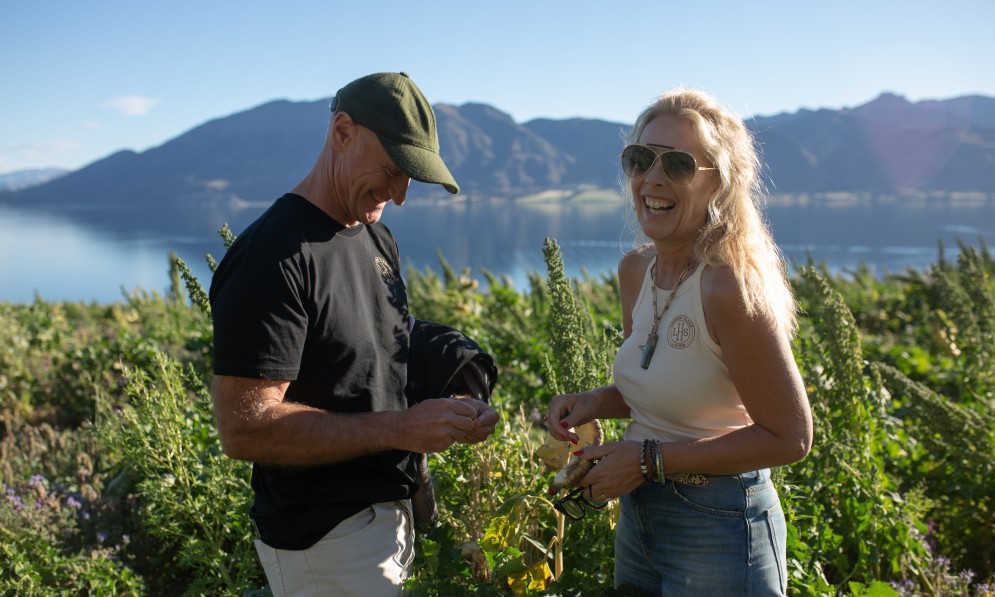The family that pioneered New Zealand’s first carbon-positive farm is also kaitiaki to a critically endangered population of lizards. By Caroline Wood.
A decade ago, the last known wild population of western grand skinks was in big trouble in its high country home at Lake Hāwea Station, north-east of Wānaka.
Once abundant, habitat loss and introduced predators had left the mokomoko hanging on by a thread in just one location – a small area of public conservation land surrounded by privately owned farms.
In 2010, the Department of Conservation decided to take the remaining individuals offsite and manage them in a protected lizard enclosure. The few left behind were expected to dwindle to nothing.
Forest & Bird magazine
A version of this story was first published in the Winter 2022 issue of Forest & Bird magazine.
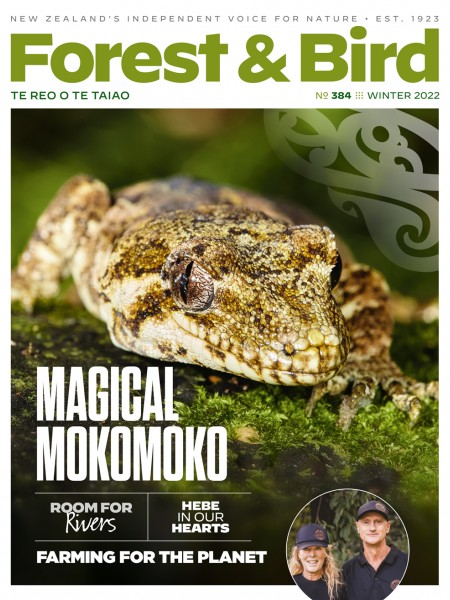
Nine years later, the Ross family bought Lake Hāwea Station and introduced regenerative farming to the 6500ha property, with 10,000 merino sheep and 200 Angus cattle.
They planted 16,000 native trees, fenced off the lake and waterways, and undertook a huge amount of pest control. It went on to become Australasia’s first certified carbon-positive farm.
Geoff Ross and Justine Troy, who are Forest & Bird members, heard about the skinks’ removal and couldn’t help wondering whether some had survived in their original habitat next to their land.
In 2019, the family commissioned herpetologist Carey Knox, of Southern Scales, to carry out a search for the “lost” lizards.
Carey enlisted the help of the couple’s son Finn and a small group of university student volunteers to look for the skinks in very challenging hill country, full of rocky bluffs, tors, and precipitous drops.
The first day they found nothing. The next day they moved location, and finally an individual was seen. In the end, total of 23 were counted over four days!
"I was hoping to find at least 20 animals to show there was something left to work with. I was really pleased to see they were still hanging on,” says Carey.
Earlier this year, a follow-up grand skink survey was carried out by Carey and a Forest & Bird volunteer, again funded by the Ross Family.
“They started seeing these large skinks straight away and counted 36 adults and juveniles over three days,” says Geoff Ross. “We were thrilled. The western skink population is breeding and has become viable.”
Rediscovering the lost lizard population has been one of many conservation- and climate-related highlights for the Ross family over the past three years.
Geoff and Justine famously founded the 42 Below vodka company in their Wellington garage in the late 1990s and sold it to Bacardi in 2006. They spent 30 years in business before moving their family from Auckland to Lake Hāwea.
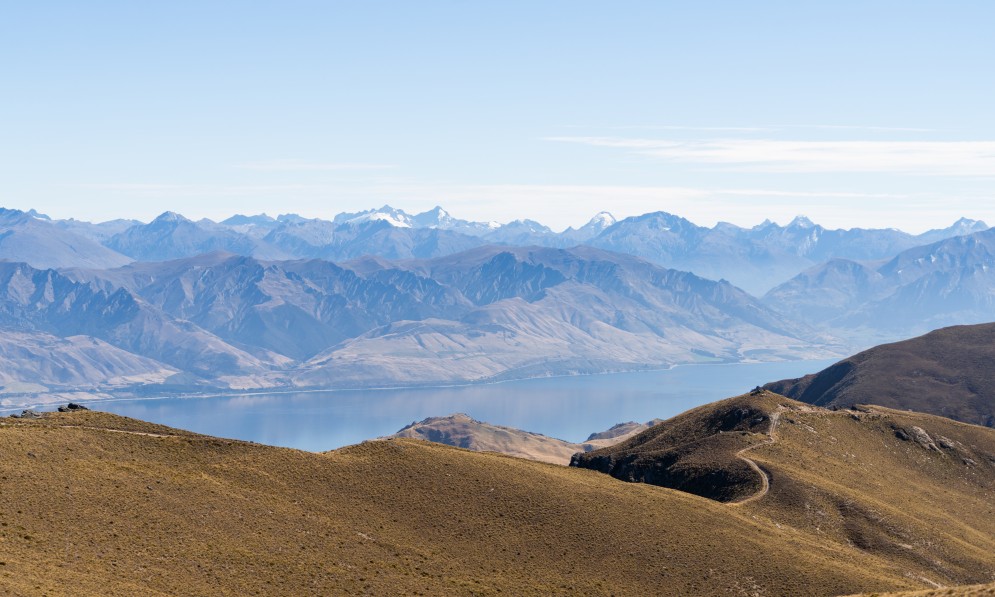
Lake Hāwea Station was the first in New Zealand to be certified carbon-positive. Image supplied
Geoff, who grew up on a farm, says they arrived at farming with a “fresh pair of eyes”. They were keen to show that regenerative agriculture could be profitable as well as good for the climate and biodiversity.
He is a founding member and current trustee of Pure Advantage, a business-led charity that promotes nature-friendly economic growth that works to protect the environment rather than degrading it.
The family’s vision was to practise restorative climate-friendly farming while planting regenerating native bush to bring back birdlife.
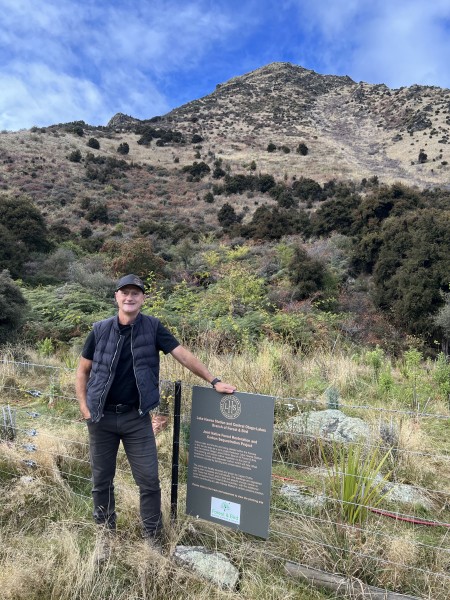
Geoff Ross is letting our Central Otago-Lakes Branch plant a carbon forest on his land.
“Soil is the unsung hero of farming,” Geoff says. “In our view, we can produce more with less impact. We don’t use mechanical tillage or synthetic fertilisers.
“We are only three years in, but the livestock gains are positive and the soil gain is obvious. We regularly test for carbon.”
The team is currently trialling a special hill country regenerative pasture seed mix to see whether it will work on the steeper paddocks.
The couple was challenged to measure the station’s carbon footprint by their son Finn, a PhD student studying carbon sequestration at Melbourne’s Deakin University.
The calculations, carried out by independent experts Dr Debbie Care and Dr Angus McPherson, showed the station’s livestock, equipment, and energy use were emitting the equivalent of 2500 tonnes of greenhouse gas emissions per year.
In contrast, the station’s regenerating bush, new plantings, and retired steep farmland were sequestering 55,000 tonnes per year, making the farm’s operations comfortably carbon positive.
Geoff says he is delighted to be working in partnership with Forest & Bird’s Central Lakes-Otago Branch on a joint native forest restoration and carbon sequestration project (see overleaf).
The station is home to many special species, including the Southern Alps gecko and McCann’s skink, an important wild stand of cypress hebe (Veronica cupressoides), a rare tree daisy (Oleria frimbriata), and kārearea New Zealand falcon. Clutha flathead galaxiid, a native fish that shares the same nationally critical threat level as kākāpō, is also found in the station’s waterways.
“When we arrived, we felt a huge responsibility to rebuild the biodiversity of this land, but we can’t do it on our own. Getting support from organisations like Forest & Bird is hugely gratifying,” adds Geoff.
Even though the grand skinks’ habitat is on public conservation land, DOC is not currently funding their protection. Instead, private interests are paying 100% of the costs of managing their recovery. As well as the Ross family’s investment, some of the station’s customers are also helping out. For example, the European fashion brand Sheep Inc and the New Zealand Merino Company are co-funding a study of birdlife in the skinks’ habitat using an audio monitor called Cacophony.
They will also support the purchase of more traps and observations on this precious Otago rocky outcrop.
You can follow Lake Hawea Station’s conservation work on Instagram @lakehaweastationliving.
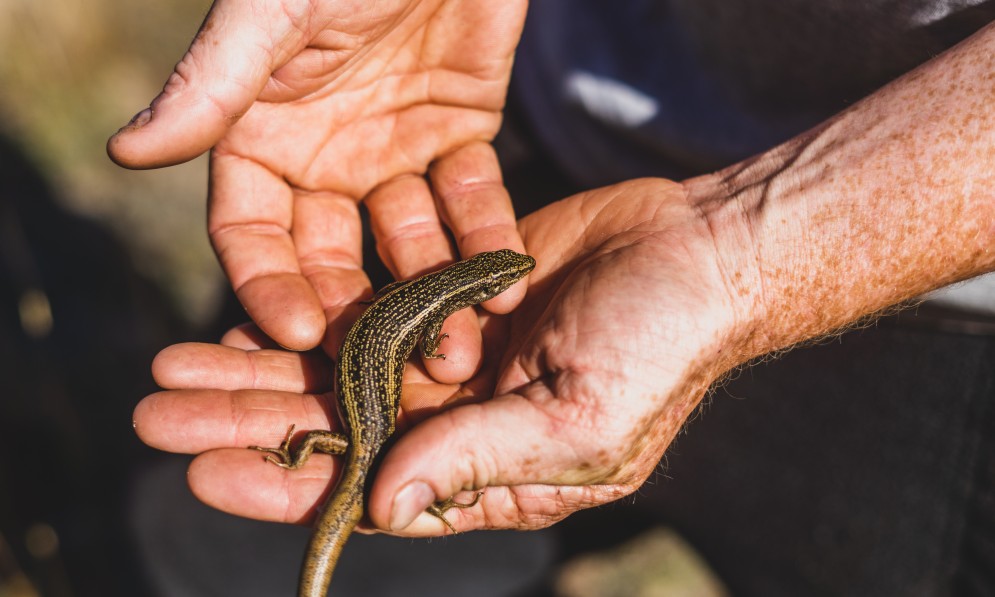
Magical Mokomoko
Big, beautiful, and highly active, grand skinks are an iconic high country lizard species for those lucky enough to spot them in the wild.
Grand skinks are made up of two geographically separated forms – the eastern (found at Macraes Flat and Middlemarch) and western (Lake Hāwea and formerly the Lindis Pass).
“Before human colonisation, grand skinks would have been a really abundant and conspicuous part of the high country’s fauna, but they have been lost in more than 90% of their original range,” says herpetologist Carey Knox.
“Agriculture isn’t great for them because farming activities can destroy their habitat and remove food sources. It’s wiped out a vast majority of their habitat, leaving them hanging on in local pockets.”
Carey is impressed by Lake Hāwea Station’s efforts to protect the last truly wild population of western skinks left on Earth.
“The Ross family is doing more for conservation than any other farmer I have met,” he added.
“They are doing so much planting, and making themselves carbon positive is a real achievement. They are setting a great example for how to make a living off the land while looking after their local biodiversity.”
Check out Carey Knox’s lizard photography at https://m.facebook.com/NZlizards/.

